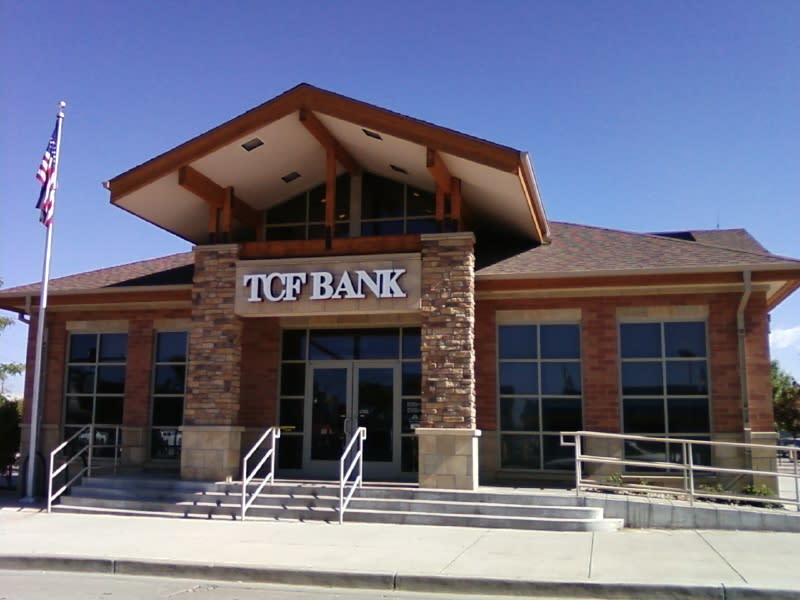Another Wells Fargo? CFPB says bank tricked people into overdraft charges

The Consumer Financial Protection Bureau has accused TCF National Bank (TCB), a Minnesota-based bank with 360 branches in seven states, of tricking hundreds of thousands of customers into accepting costly overdraft services.
Back in 2007, the Federal Reserve gave consumers overdraft protections, requiring banks to ask customers to opt-in to overdraft services that came with expensive charges.
“The Opt-In Rule posed a serious threat to TCF, which depends on overdraft revenue to a greater degree than its competitors,” the CFPB wrote in its complaint suing the bank. According to CFPB Director Richard Cordray, this is because the bank doesn’t rake in substantial revenue from other common consumer banking products like credit cards and mortgages.
“A substantial part of [TCF’s] revenue comes from fees,” Cordray said on a conference call Thursday. The opt-in rule would be a problem. “In 2009, TCF estimated that $182 million in annual revenues was at risk.”
The CFPB alleges the bank decided on a strategy to get more customers to opt-in to the overdraft service. “We believe TCF trained its employees to use unlawful tactics in their marketing to consumers,” said Cordray. Instead of asking customers whether they’d take a $35 charge to overdraw, they played down the fee.
The in-person tactics included making the opt-in seem mandatory by including it next to a bunch of other mandatory things, obscuring the fee size, giving customers less information, and giving them scenarios to coax their behavior.
“One scenario, for example,” Cordray said, “would be a high-stakes emergency where people would desperately need access to money, like a broken-down car on the side of the road in a Minnesota winter.” If a customer doesn’t opt in to let the bank overdraft their account when they don’t have sufficient funds for a particular purchase, their debit card is just declined without a charge.
The tactics worked, and TCF had more than triple the average rate of opt-ins by 2014—66% of checking customers. In one of the most eyebrow-raising bits of the call, Cordray pointed to a part of the complaint that said the strategy was so successful, the CEO of TCF at the time named his “pleasure boat” Overdraft.
In a statement, TCF denied the allegations, indicating its intention to “vigorously defend against the CFPB’s complaint.”
“We believe that at all times our overdraft protection program complied with the letter and spirit of all applicable laws and regulations, and that we treated our customers fairly,” the statement read. The bank countered claims by noting that online opt-in numbers are similarly strong (“over 60%”) and that complaints about understanding of the policy are minimal.
The allegations follow last summer’s scandal at Wells Fargo (WFC) in which it was revealed that 5,700 employees had been fired after they created up to 2 million deposit and credit card accounts without customers’ permission. In the following weeks, it became clear that unreasonable sales goals and intense pressure on employees had created conditions that would lead to this behavior.
The similarity was not lost on the CFPB, which gave Wells Fargo the Bureau’s largest fine to date—$100 million. “We absolutely see a parallel here,” said Chris D’Angelo, Associate Director for Supervision, Enforcement and Fair Lending. “Much in the way of Wells Fargo, the incentives pushed employees.”
Besides offering bonuses to those who secured high opt-in rates, the CFPB alleges that there was often local TCF branch goals, as well as fear of punishment for low numbers, despite termination for low opt-ins not being part of the bank’s official policy. “Many employees still believed they could lose their job if they did not meet their sales goals,” said Cordray. “By linking opt-in rates with an employee’s performance goals instead of consumer preference, the bank instituted a culture of pushing consumers into overdraft services.”
This isn’t the first CFPB action taken against overdraft abuse—the bureau has gone after banks twice since the Federal Reserve and CFPB rules were implemented. It’s also not the first time bank culture and pressure to make the numbers harmed consumers. In addition to Wells Fargo, an academic study found that many banks are built on a culture of intense pressure that is all but guaranteed to end in illegal activity. And with branch closings accelerating, the potential for pressure to be amplified is clear and present in all physical bank branches.
Ethan Wolff-Mann is a writer at Yahoo Finance focusing on consumer issues, tech, and personal finance. Follow him on Twitter @ewolffmann.
Read more:
Bipartisan Committee: Killing Obamacare would cost $350 billion
Robots will kill jobs and make inequality worse
Craftsman’s famous lifetime warranty in question after $900 million sale
